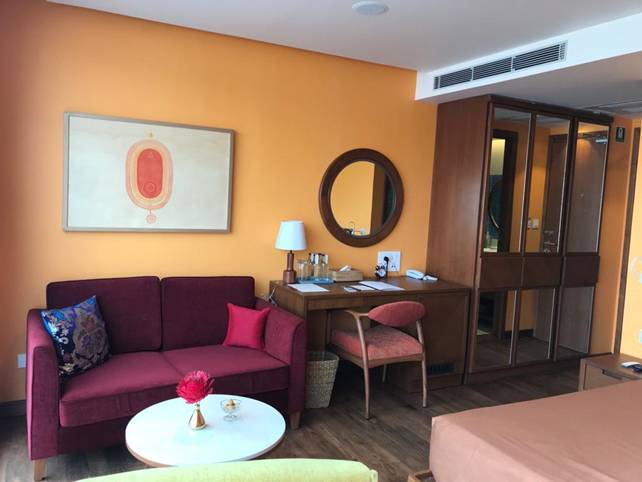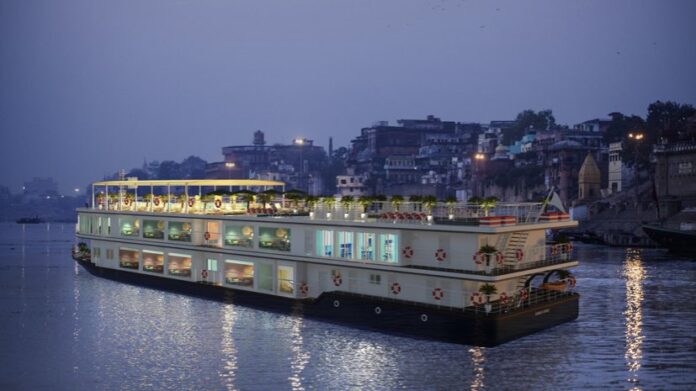Up till now, whenever someone talked of holidaying on a cruise liner, a multi-deck luxury ship lurking on seaside came to mind. But leveraging of the unique landscape of Indian peninsula, with conversion of over hundred untamed big rivers, criss-crossing and emptying into Indian Ocean, into cruiseable waterways has made a paradigm shift.
India looks poised to transform its cruise tourism sector with the launch of the Cruise Bharat Mission and world’s longest cruise on MV Ganga Vilas Cruise. This ambitious initiative aims to double cruise passenger traffic by 2029, positioning India as a premier global cruise destination. In the fiscal year 2023–24, the country recorded 4.71 lakh cruise passengers, and the mission envisions over 1.5 million river cruise passengers traversing more than 5,000 kilometers of operational waterways.
Ganga Vilas Cruise is flagship of entire armada of river cruise liners in India. Starting from Varanasi, it cover a distance of more than 3,200 kms across 27 river systems in 5 states in India and Bangladesh, before docking at Dibrugarh in Assam. The 51 days journey covers 50 tourist spots which include World Heritage sites, national parks, and iconic ghats. It has three decks, 18 suites on board with a capacity of 36 tourists. Its itinerary has been curated to showcase the rich heritage of India with stop overs in spots of historical, cultural and religious importance. From the famous Ganga Arti in Varanasi, it stops at Sarnath, a place of great reverence for Buddhism, covers Mayong, known for its Tantric craft, and Majuli, the largest river island and hub of Vaishnavite cultural in Assam. The cruise also traverses through the biodiversity rich World Heritage Sites of Sunderbans in Bay of Bengal delta and Kaziranga National Park, home to one-horn rhino.
The Cruise Bharat Mission adopts an inter-ministerial approach, involving agencies such as Customs, Immigration, CISF, State Tourism Departments, State Maritime Agencies, District Administrations, and local police. This collaborative framework aims to streamline policies, regulations, and operations within the cruise sector. The mission is structured in three phases, commencing on October 1, 2024, and concluding on March 31, 2029.
Complementing this initiative is the Maritime India Vision 2030, which aspires to amplify India’s presence in the global cruise market, encompassing both ocean and river cruises. The vision outlines interventions across three key areas: Oceanic and Coastal Cruise, Island and Infrastructure Development, and River and Inland Cruise.

To bolster cruise tourism, the government has implemented several measures:
- Cruise vessels are granted berthing priority over cargo ships.
- A rationalized tariff structure with standard port charges and nominal passenger tax has been introduced, offering 10–30% volume-based discounts.
- Ousting charges have been eliminated to attract more cruise traffic.
- Cabotage laws have been waived for foreign cruise ships, permitting them to carry Indian nationals between domestic ports.
- E-visa and visa-on-arrival facilities have been extended.
- Conditional IGST exemption is granted to foreign vessels converting to coastal routes, with reconversion required within six months.
- A uniform Standard Operating Procedure (SOP) has been implemented for all stakeholders involved in cruise operations.
- A single e-Landing Card is now valid across all ports on a cruise itinerary.
River cruise tourism, an emerging segment in the leisure industry, is also receiving attention. India’s extensive network of over 20,000 kilometers of navigable waterways, encompassing 110 waterways and connecting around 400 rivers, offers immense potential. The Inland Waterways Authority of India (IWAI) is spearheading efforts to develop this sector by developing navigational channels on waterways, including the installation of navigational aids and dredging where necessary.
Constructing vessel berthing facilities at multiple points along the waterways to facilitate tourist movement and promoting heritage sites and tourist attractions along the waterways to create a comprehensive river cruise tourism ecosystem are major thrust areas
With 12 major and 200 minor ports along its 7,500-kilometer coastline, and numerous states, union territories, and 1,300 islands situated along coastlines or riverbanks, India is well-positioned to harness its natural waterways for cruise tourism. These initiatives are set to invigorate local economies, generate employment in hospitality and related sectors, and offer travelers unique experiences that blend cultural heritage with natural beauty.



